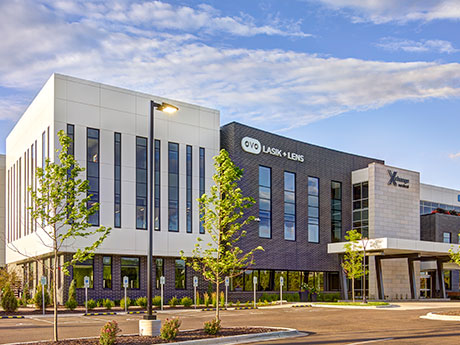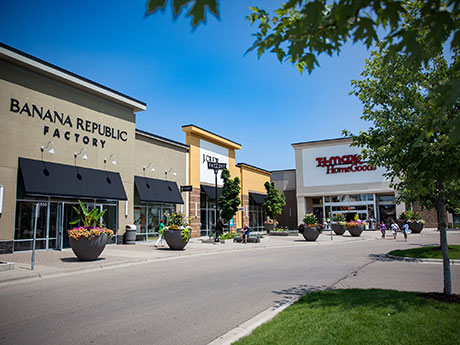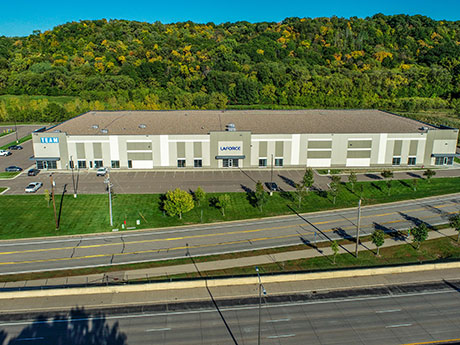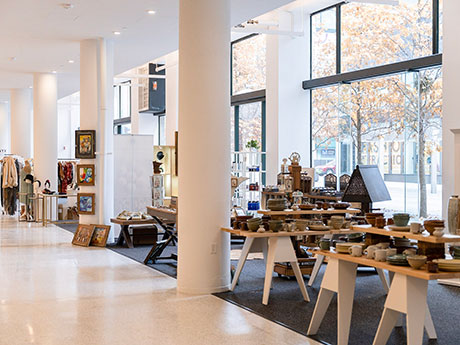By Jill Rasmussen, Davis The Minneapolis – St. Paul medical office building (MOB) market remains strong with calculated strategic growth from both hospital systems and independent clinics. The MOB sector has been resilient during the pandemic, economic challenges and local civil unrest. Providers have been focused on expanding into new market areas to locate close to their patient base, providing full-service medical hubs offering outpatient surgery and specialty services to communities while offering lower-cost care away from a hospital campus. The overall market remains very stable with a current vacancy rate of 8.6 percent on-campus and 10.6 percent off-campus. There remains high interest in off-campus locations for most non-acute care for location access and cost savings. Base rents continue to increase both on- and off-campus due to demand and higher new construction pricing. Base rates have reached nearly $22 per rentable square foot (rsf) on average on-campus and $21/rsf for off-campus existing product. New MOB construction rates have increased from $24.50/rsf to $28+/rsf due to interest rate hikes and supply chain/labor issues, but new construction projects continue to move ahead based on provider’s strategic initiatives. Annual base rent increases are trending up due to current inflation levels from a historical …
Minnesota
By Jesseka Doherty and Johnny Reimann, Mid-America Real Estate The fundamental strength of the metro Minneapolis economy is on full display in the suburban retail real estate market this summer, where space is tight, new supply is limited, rents are on the rise and construction costs continue to challenge tenants and landlords alike. The macroeconomic picture in the first half of the year was stunning, actually. For the second quarter that ended June 30, the unemployment rate was a remarkable sub-2 percent, which was even lower than the national level of about 4 percent, and consumer spending was robust. Urban submarkets have been more challenged, but even in the Minneapolis central business district, retail rents are holding up as the office market shows stability. Driving demand With work-from-home still a factor, remote employees who live in the suburbs often are more inclined to shop, dine and play close to home, which bodes well for retail in proximity. Across key trade areas, retailers and other tenants in regional and community centers are more in demand than ever. Submarkets faring well include Apple Valley, Burnsville, Coon Rapids, Eagan, Maple Grove, Roseville and Woodbury. The densification of the suburbs also is driving demand …
2021 has been an absolute whirlwind for the Minneapolis-St. Paul (MSP) industrial market. Plunging cap rates, liquidity growing faster than ever and a sharply felt shortage of new supply have defined the last year and will continue to define 2022. New faces on the development side are entering the market right and left to capture the huge profits to be had from the supply/demand imbalance. New construction has been stabilizing in six to eight months and institutions have ear-marked MSP as a forward-sale market. The following are a few of the salient trends that should be considered when contemplating the MSP industrial market. Liquidity growth Since the last trough in 2016, the MSP industrial market has experienced an average 30 percent year-over-year growth in sales volume. 2021 experienced nearly half a billion dollars more in industrial investment sales than 2020, according to Real Capital Analytics. Cap rate compression Over the last year, the MSP industrial market has experienced change unlike in any other year. Entering 2021, the low-water stabilized cap rate was 5.15 percent, but by year-end, that had sunk 82 basis points to 4.33 percent. Warehouse rates in the $8 to $9 NNN range, once rare, are now commonplace; …
The metro Minneapolis retail real estate market is healthy overall coming out of 2021, with suburban submarkets on fire in many cases and urban submarkets generally subdued. A major overhang of supply was absorbed across the region last year as construction slowed dramatically, pushing retail vacancies down, rents up and sales prices of single and multi-tenant assets higher overall. It’s a testament to the market’s overall stability and resilience given the multiple waves of COVID, and events surrounding the George Floyd case that was prosecuted last year in the city. Work-from-home effect With many white-collar professionals still working from home and the center-cities tougher on mask mandates and vaccine requirements, the suburbs have shone the brightest. Vacancies were as low as 6 percent in some areas, with the overall market at 8.2 percent at year-end, according to the Minnesota Commercial Association of Real Estate/Realtors (MNCAR). Among the strongest performing submarkets have been Apple Valley, Maple Grove, Coon Rapids and Woodbury. The metro’s eight regional malls are generally faring well, unlike in some other markets across the U.S. that are more over-supplied. That said, there’s some adaptive reuse going on, including in the northwest suburb of Maple Grove where a freestanding …
By Peter Loehrer, Colliers MSP Minneapolis has secured its position as the darling market of the Midwest industrial investment community. Minneapolis was the quintessential Midwest city: cautious real estate development, durable rents with stately growth and moderate but unwavering absorption growth year to year. This, however, is no longer the case. A combination of repeated institutional capital injections, a highly constrained land market and exponential growth in tenants looking for new space has transformed Minneapolis into an institutional and foreign capital target market. Institutional capital By far the most transformational event in recent history for the Minneapolis industrial market was Link Industrial’s entrance into the market. Beginning in 2018 with the Gramercy acquisition, and continuing in 2019 with the Space Center acquisition — both of which have bits and pieces of the national portfolio located throughout Minneapolis — Link made its first real foray into Minneapolis in May of 2019 with the acquisition of the 2.2 million-square-foot Industrial Equities portfolio. Link quickly followed this up with pieces of the GLP and Colony Capital acquisitions, as well as the largest real estate purchase in Minneapolis history, the 7.2 million-square-foot CSM Corp. industrial portfolio, and most recently the 2.5 million-square-foot Prologis portfolio. …
By Ted Bickel and Jeff Budish, Colliers MSP At the start of the pandemic last spring, conversations with developers, investors and operators varied from discouraging to catastrophic. Everyone expected the worst. Luckily for the industry, that is not what happened. Amid a year of great uncertainty across the economic spectrum, the Twin Cities multifamily market showed a great deal of resilience, overcoming many challenges in 2020. 2020 recap Considering that the marketplace was nearly frozen for the second quarter of 2020, overall transaction volume for 2020 was surprisingly strong. Minnesota saw a considerable uptick in activity toward the end of the year, driving annual totals up to just short of $1.3 billion. A strong bounce-back in the second half of the year speaks to strong demand drivers and generally solid operating performance — even during the economic shutdown. However, while vacancies did not run up, as many had feared, collections and bad debt suffered. Understandably, many tenants struggled to pay rent as stimulus waned later in the year. This had a notable effect on net operating income. Overall, pricing did not change, while cap rates lowered to some extent. Inexpensive debt, particularly from the agencies, was a large factor in …
By Joe Mahoney, Opus Development Co. Despite a confluence of major events in 2020 that shook our world — the pandemic, social unrest, historically high rates of unemployment — the industrial real estate market in the Twin Cities fared very well. While positive net absorption was limited in the second quarter of 2020, the rate accelerated to 1.1 million square feet during the fourth quarter and ended the year at 3.2 million square feet, according to CBRE Minneapolis-St. Paul. Active users also increased. In the beginning of 2020, there were 6.4 million square feet of users. At the end of the third quarter, that number had increased to 10 million, and by the end of the year, there were close to 12 million square feet of users, almost doubling over the course of the year. We see user demand continuing to trend up and accelerate this year. To support growth plans, users are looking for highly functional manufacturing, warehousing and distribution facilities. Many businesses are increasing efficiency and productivity by consolidating several obsolete buildings into one new highly functional, build-to-suit space. COVID-19 supply chain disruption has prompted some businesses to increase their footprint for storing more inventory and reducing reliance …
The Twin Cities of Minneapolis and St. Paul continue to be a very attractive marketplace for multifamily investing due to an average vacancy across the metro of 3.1 percent, as well as average 2019 rent growth of 5.8 percent, according to a recent report issued by Marquette Advisors. The Twin Cities currently has nearly 30,000 multifamily units in the development pipeline that are expected to be delivered between 2020 and 2022. With all of this development activity and an abundance of local and regional banks in the area, the Twin Cities continues to be a very well-banked market, particularly with regard to apartment construction. Local and regional banks are all very active. In addition, national banks are eager to invest in the healthy, consistent Twin Cities multifamily market. But despite capital being relatively plentiful and accessible, local, regional and national developers are exploring more efficient ways to capitalize on the abundance of development activity. They also pursue ways to stretch their own equity through a variety of financing alternatives. Developers may be tapped out with their current banking relationships, or as projects get larger and more expensive, desired loan sizes may drift higher than their banks’ lending limits. Lenders and …
In 2019, the Twin Cities net lease retail market experienced a historic year, benefitting significantly from aggressive western U.S. capital. The Twin Cities saw an unprecedented number of buyers from the western United States who were willing to pay a premium above local buyers for quality net leased real estate. There were 95 net lease transactions in the Twin Cities in 2019 that sold below a 7.5 percent cap rate, according to CoStar Group. Of those transactions, 33 percent were sold to buyers based in the West Coast. What’s more, of the net lease properties that sold below a 6.25 percent cap rate, nearly 50 percent were sold to buyers based in the western U.S. In comparison, in 2018, only 25 percent of the net leased properties below a 6.25 percent cap rate in the Twin Cities sold to buyers based in the western U.S. This trend helped average cap rates compress for both net lease multi-tenant pad/strip centers as well as single-tenant cap rates between 2018 and 2019. The average multi-tenant net lease cap rate in 2018 was 7.25 percent versus 7.1 percent in 2019. The average single-tenant cap rate in 2018 was 6.7 percent versus 6.6 percent in …
Even in the context of a sustained stretch of national economic growth and a Midwest region where there are plenty of high-performing markets, Minneapolis-St. Paul stands out. The commercial real estate market in and around the Twin Cities is thriving, in large part due to some impressive structural fundamentals. Metrics and measurables The state of Minnesota — especially the Minneapolis-St. Paul metro area — has a very diverse base of employment, with a long list of significant Fortune 500 companies, including familiar and even iconic names like Target, Best Buy, 3M, U.S. Bancorp, General Mills, Medtronic, C.H. Robinson and United Health Care. United Health Care alone generated $226 billion in revenue in 2018. The economic and market diversity of the Twin Cities stands in contrast to some other Midwest markets, even some that are experiencing significant growth. The market has also experienced an exciting and ongoing uptick in workforce numbers and population growth, elevating Minneapolis-St. Paul far ahead of U.S. averages for both numbers — surpassing cities like Seattle, Atlanta and Washington, D.C. Forbes lists the state of Minnesota as among the nation’s top 10 “Best States for Business.” With 65 percent of the state’s population living in the Minneapolis-St. …
Newer Posts











